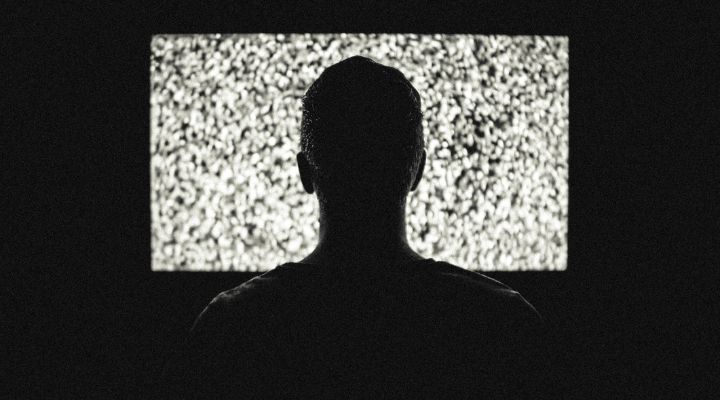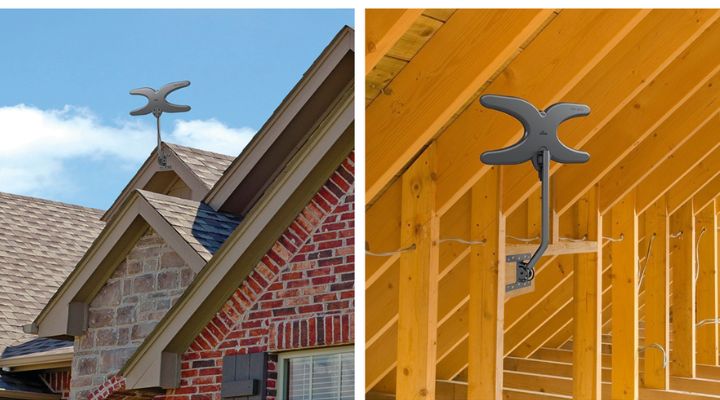If you are experiencing difficulty with your Freeview signal displaying a fuzzy image, it is only sometimes caused by weak signal strength. The situation can be TV signal strength good but quality poor. It is sometimes caused by too many signals that result in poor quality. Other factors such as corrosion, splitters, and many more also can cause poor quality or pixelated images.
There are so many myths about this problem I found in users. Either it is because of an antenna, or some ask, “should I need an amplifier?”
So in this article, I will pursue the reasons behind this issue and provide some authentic tips. These will help you to get rid of these myths and improve signal quality.
Is TV signal quality the same as signal strength?
Generally, signal strength refers to the amount of electrical energy a TV antenna receives from a broadcasting tower. It is different from signal strength, which is the measure of the power of the signal that the antenna is receiving. While a strong signal indicates that the signal is being received with sufficient power, the quality of the signal determines how clear and stable the picture and sound will be.
Why Does My TV Say Poor Signal Quality?

Here are some common causes of poor signal quality:
Antenna: Generally, the antenna is directly in contact with a TV signal. So if your antenna is not in a perfect position or becomes faulty in any way, it might affect the signal quality. It might happen that it can’t catch signals effectively or gets obstructed by obstructions, for example trees, buildings, etc.
Poorly-shielded cable and connections: Some cables are used to connect the antenna to the TV. Those are needed to be shielded properly. If it gets a poor shield or the connections get loosened and faulty, it will cause poor signal quality.
Corrosion: Corrosion is another vital thing to check. Over time, it can develop on the connections of the antenna and cables. Make sure that your antenna and cables are correctly cleaned or not.
Splitters: Splitters are one of the essential elements in dividing the TV signal. It traces the tv signal and distributes it to several TVs. So, if the quality of the splitter is poor or not properly installed, it can cause poor signal quality. Amplifiers: Amplifiers are another elementary element that works to boost the TV signal. It is also the same as the splitters. Its quality is essential. And also ensure it doesn’t get damaged.
Flyleads: Flyleads are short-length cable connectors. It connects a set-top box or a DVD player to the TV. Poor signal quality can also be caused if the flyleads are not high quality or are faulty.
6 Simple Steps to Fix TV Signal Strength Good But Quality Poor
You can take several steps to improve your TV signal quality and enjoy uninterrupted entertainment. Here are some of them we can assist with.
Step 1: Check The Antenna Placement And Direction

Achieving the best possible signal strength requires strategic positioning of the antenna in an area with the least interference to receive a clear signal. Experimenting with different locations and heights may be necessary to identify the ideal position.
Moreover, aiming the antenna towards the broadcasting tower to capture the strongest signal would be best. Using a compass or signal strength meter can assist in identifying the precise direction to point the antenna. By adjusting the direction of the antenna, you can significantly enhance signal strength and improve the quality of your viewing experience.
Step 2: Check Weather Conditions Frequently

When installing and maintaining TV equipment in areas with much atmospheric interference, it is crucial to consider the weather conditions. Furthermore, people residing in regions with extreme weather conditions might need extra precautions to guarantee uninterrupted TV service. For instance, it may recommend unplugging TV equipment during a thunderstorm to avoid damage from lightning strikes.
Step 3: Reduce Interference

To minimize the impact of physical obstructions on signal quality, one may need to adjust the placement of their device or use signal repeaters or boosters to strengthen the signal. It’s important to recognize physical objects’ role in signal interference, as this can help you optimize your connectivity and improve your overall experience.
While it can resolve some cases of interference by adjusting the frequency or location of the impacted devices, more complex situations may require advanced solutions such as using shielded cables or installing signal filters. It’s important to remain aware of the potential for interference from other electronics and take appropriate measures to minimize its impact and ensure smooth and reliable performance.
Step 4: Use A Signal Amplifier

Using a single amplifier can be an effective way to improve your TV signal quality. An amplifier helps best that to rise the strength of a TV signal. It is designed to amplify the signal, allowing it to travel further and with less interference. The use of an amplifier can be particularly beneficial in areas with weak signal strength or interference from other devices.
However, it is important to note that using too many amplifiers or improperly installing them can actually result signal distortion and poor quality. Additionally, placing the amplifier close to the antenna is crucial to avoid signal loss through the cable.
Step 5: Try Different Types Of Antenna

Trying a different type of antenna can be a crucial step in achieving the best possible TV signal quality, particularly if you live in an area with numerous signal interferences. Different antennas are designed to capture signals in different ways, so experimenting with various types may help you find the optimal one for your location. It can lead to clearer and more stable signals, allowing you to enjoy uninterrupted entertainment.
Indoor vs outdoor antenna: Choosing between an indoor or outdoor antenna largely depends on the location and distance from the broadcasting tower. Outdoor antennas tend to perform better, providing superior signal strength and quality due to the lack of obstructions such as walls or other structures. However, an indoor antenna may be more practical and convenient in some situations.
Directional vs omnidirectional antenna: Choosing between a directional and omnidirectional antenna depends on the location of the broadcasting tower. When selecting an antenna, it’s essential to figure out the location of the broadcasting tower. A directional antenna is best suited to receive signals from a specific direction, making it a good choice if the tower is located in a particular direction.
Conversely, an omnidirectional antenna can receive signals from all directions, making it the better option in areas with multiple broadcasting towers. Selecting the appropriate type of antenna is vital to guarantee optimal signal strength and quality.
Step 6: Examine And Maintain The Antenna

To ensure optimal performance, it’s essential to regularly examine and maintain your antenna. It involves inspecting for physical damage, cleaning the antenna and its components, and replacing worn or damaged parts. If your antenna is old and cannot receive digital signals, upgrading to a new model may be necessary to obtain the best possible signal quality.
Step 7: Contact Your TV Service Provider

If all other attempts to fix the TV signal quality have been unsuccessful, you should contact your TV service provider to report the problem. The provider can offer assistance or advice via phone or email.
If it can’t resolve the issue remotely, the TV service provider may schedule a technician visit to identify and solve the problem. During the visit, the technician will examine the signal strength and quality and make necessary repairs or adjustments to the equipment or antenna. Contacting a professional technician is especially crucial if the problem is related to wiring or other technical issues.
Conclusion
To fix poor TV signal quality, you should check your antenna’s orientation and position, ensuring that it is pointed towards the nearest broadcasting tower. It is important to regularly maintain your TV antenna to ensure that it continues to function optimally to avoid TV signal strength good but quality poor. Regular maintenance of the antenna is essential, such as inspecting for any damages or signs of wear and cleaning it regularly to prevent any accumulation of debris or other obstructions that can interfere with signal reception. Don’t settle for poor signal quality that causes interruptions or distortions in your viewing experience. Instead, take action today to improve your TV signal quality and enjoy your favorite programs and movies with the highest clarity and detail possible.
